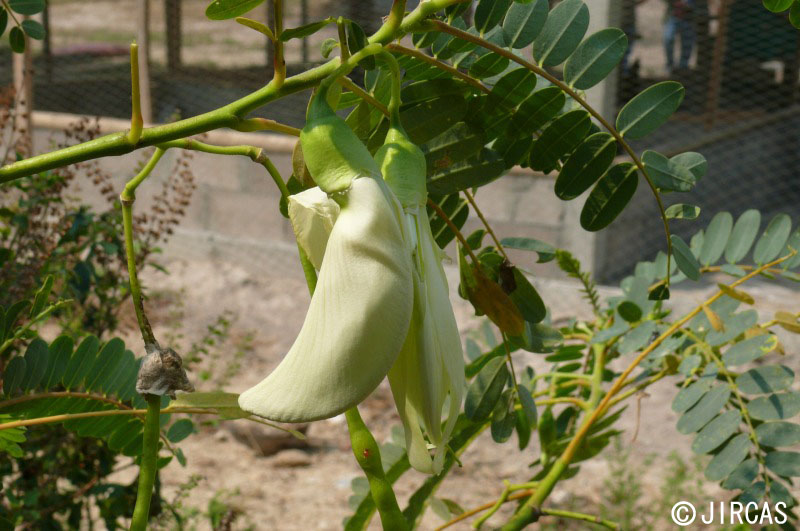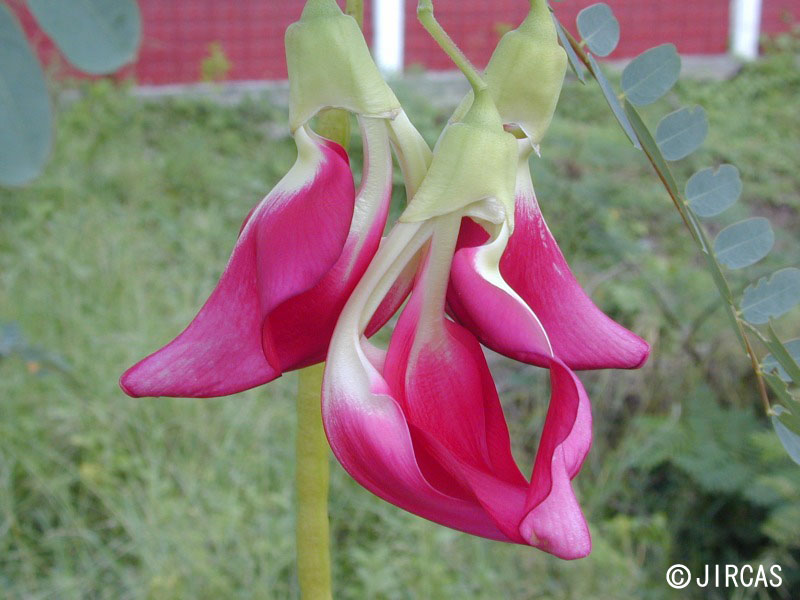Sesbania grandiflora (L.) Desv. (Fabaceae)
- Scientific name
- Sesbania grandiflora (L.) Desv.
- Family name
- Fabaceae (Syn. Leguminosae)
- Common name
- Vegetable hummingbird (English); shiro gocho (Japanese)
- Local name
- Khae, khae ban
Small, short-lived tree, 4–10 m tall, cultivated. Leaves compound, 1-pinnate, 15–30 cm long, petiolate; leaflets up to 60, oblong, obtuse, 2.5 cm long, 8–10 mm wide, middle leaflets larger than terminal leaflets. Inflorescence an axillary panicle, 4–7 cm long. Flowers strongly bilateral, papilionaceous, 3–4 together, 7–8 cm long, white or dark red. Calyx 5, campanulate. Corolla 5, differentiating into 1 standard, 1 keel, and 2 wings. Stamens 10, diadelphous. Ovary superior, stipitate short, cylindrical, 1-loculed. Pod oblong, attenuate, somewhat constricted, with prominent margin, c 50 cm long, 8–9 mm wide; seeds many, elliptical, compressed, c. 6 × 5 mm, brown.
Shoots and young leaves are blanched and eaten with nam phrik (dipping sauces), as are flowers after removal of the bitter stamens. Flowers are also sometimes used in kaeng som (sweet and sour curry), fried with pork or prawns, or mixed with flour and fried.





